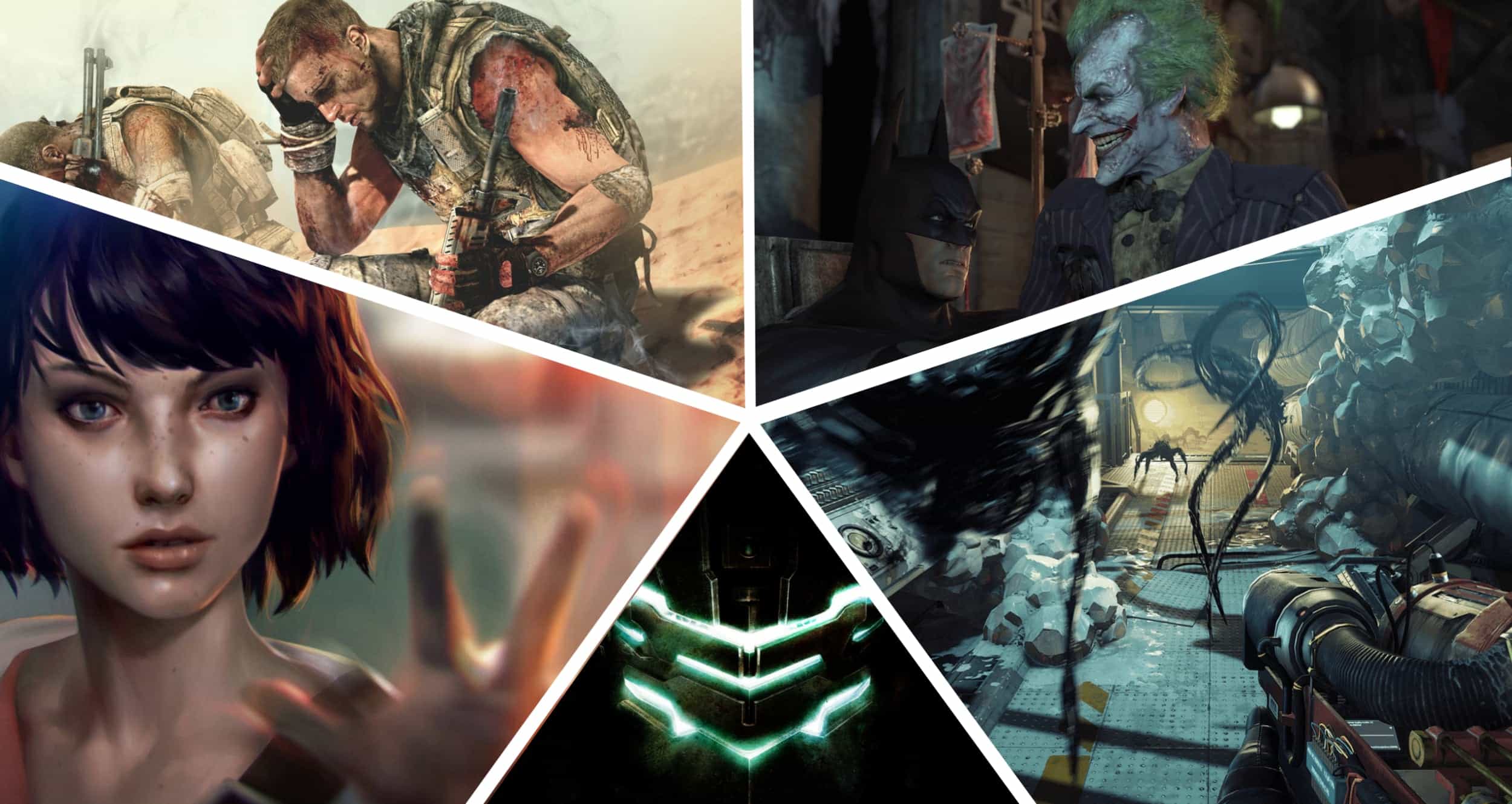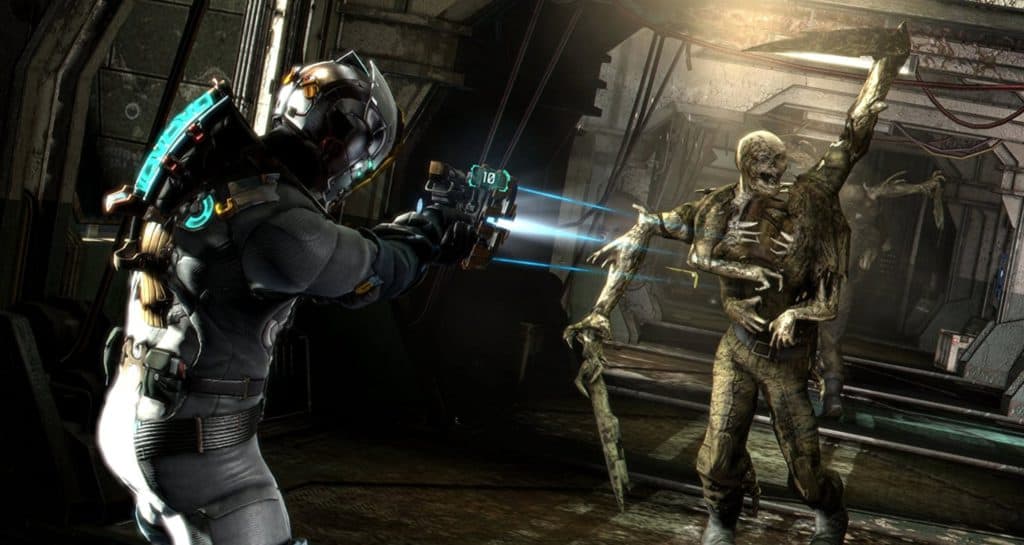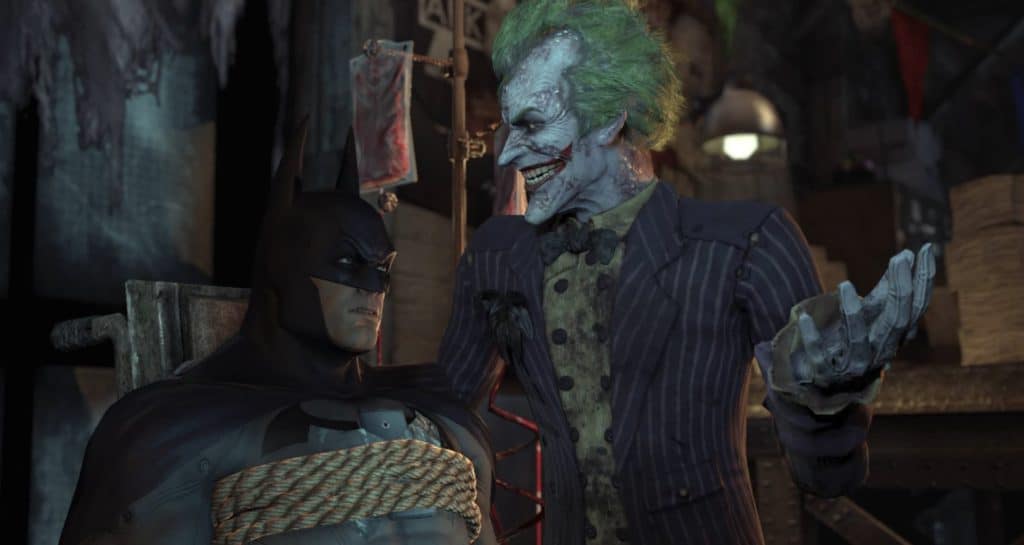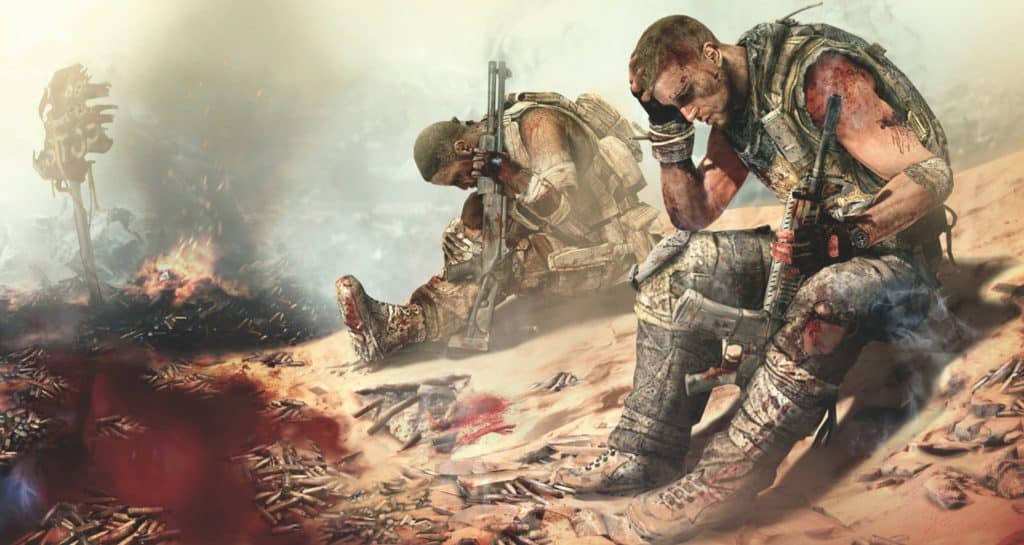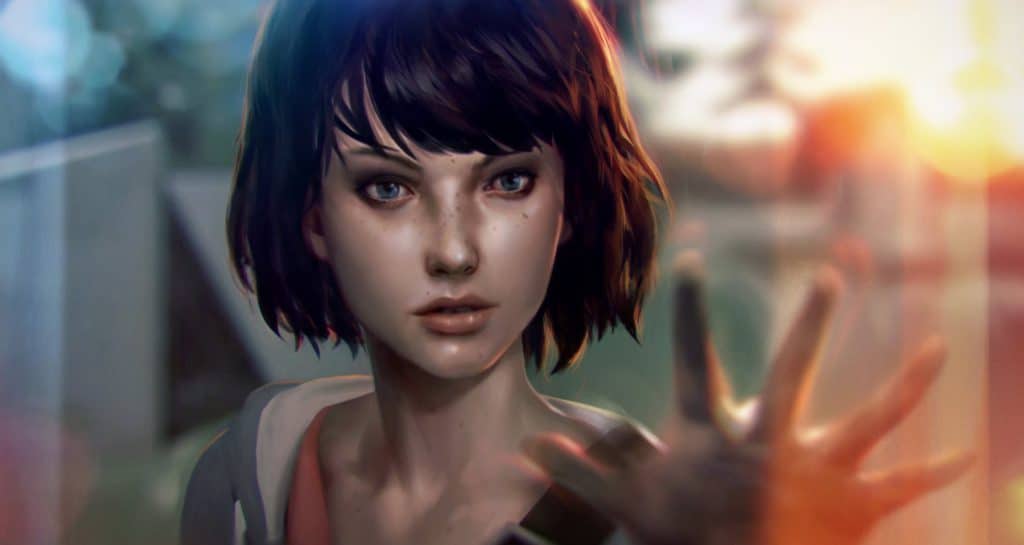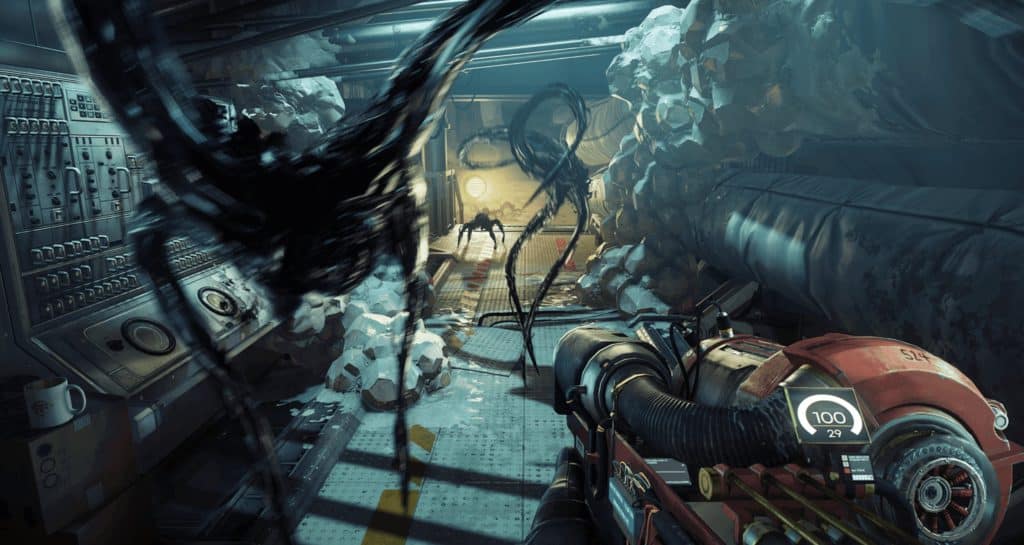A good plot twist is crucial to any story, whether it be a movie, a novel, or even a video game… but sometimes players can figure out the twist long before the showdown. Other times, however, the twist comes at you like a hungry headcrab wanting to munch on some brains. Here are five video games that gave away their twists either very early on in the game, or spoiled it halfway through.
Before you continue, please note that this article will obviously include spoilers for the games mentioned. So proceed at your own risk.
Dead Space
This one can be a bit subjective to players who take pride in being eagle-eyed and thorough. It really all depends on how much you like to analyse literally all aspects of a game… including chapter names.
In Dead Space, you assume the role of Isaac Clarke – who is a seemingly overqualified engineer. The game has you explore a ship infested with Necromorphs in an attempt to rescue Isaac’s girlfriend, Nicole. As you carry on through the story, the narrative implies time and again that Nicole is still alive and well. Although slightly cliched, not much beats a story about saving your damsel in distress, after all?
However, at the very end, the game throws the shocking realisation and plot twist at you that Nicole was dead the entire time! Worse still, every communication Isaac had with Nicole was nothing more than severe hallucinations. I am shook… or at least I was, until I did a bit of reading, and realised I could have seen the plot twist coming from the very beginning.
While title screens and menus are 90% of the time exactly that, there are times when they can serve other purposes. In the case of Dead Space, eagle-eyed gamers can recognise the first letters of each chapter and put them together:
N-I-C-O-L-E-I-S-D-E-A-D
Yeah… Dead Space literally spells out its final twist.
Chances are that most players never even knew about this deceptive little spoiler, nay ‘Easter egg’, that was embedded by EA Redwood Shores. It is a pleasant reward for the super analytical folks out there. Alas, it is a pity that the series ended on such a downbeat (fans will know what I am referring to).
Arkham City
The Arkham series remains one of gaming’s most influential superhero franchises. To this day, the franchise has garnered positive reviews and sold millions of copies worldwide. In the games you assume the persona of brooding detective and “self-made” billionaire Bruce Wayne, while he crusades across Arkham (and the whole of Gotham in later titles) in order to deliver justice to the world.
Although the series began with Arkham Asylum, the later release of Batman: Arkham City is considered as the strongest title in the series. It made headlines for months after launch for many reasons, least of all for the player choice to kill off the Joker.
The Joker appears to be very sickly throughout the first bit of the game, but eventually comes back ‘right as rain’ not long thereafter. However, after Batman and Joker have a bit of a domestic, and Batman makes it through the majority of the plot, it is revealed via a plot twist that the healthy Joker is Clayface! Clayface had impersonated the villain at the real Jokers behest.
This plot twist is a pretty big deal, considering a villain such as Clayface would never be able to come up with the idea himself. The actual Joker ultimately reveals it all and explains how he persuaded his shapeshifting ally to take the heat for him. However, very observant players may have known that something was up from the exact moment “healthy Joker” first appeared.
During the first confrontation, players can activate Batman’s Detective Vision. In doing so, players will notice that Joker has no skeleton – something that most enemies in the game have, obviously. This not only directly demonstrates to you that Joker may not be all he says he is, but that something is definitely wrong.
Then again, the game conditions you to use detective vision so much throughout, that looking for features like skeletal structures kind of goes through the window in favour of looking for guns, vision cones and the like. Whatever the case may be, this is a nice little way to reward clever and observant players early on in the game.
Spec Ops: The Line
Spec-Ops: The Line remains a great game. It is one of only a few military games that go above and beyond the typical shooter format. It is about war, in all aspects of the word: the brutal and sometimes horrific decisions soldiers have to make, the toll it takes on people, and how badly it affects soldiers on the front lines.
Throughout the game, you and your squad hunt down an old army colonel named Konrad. As you traverse Dubai, Captain Martin Walker (the protagonist) and his squad begin to experience the most horrific side of war imaginable. This leads Walker to start committing war crimes, justifying it as a means to an end. Konrad seems to push Walker over the edge… but is it really all so simple? Cue plot twist!
At the end of the game, it is revealed that Konrad was dead for a long time. It is also revealed that the Konrad with whom Walker and his squad had been communicating with, was, in fact, an imaginary presence that Walker had created to cope with the atrocities he committed at the very start of the game. It also served as a means to justify the horrific war crimes that were committed later in the game.
The plot twist can be viewed in two ways: either very shocking or shrugged off as a poor plot mechanic. With that said, it does serve to single-handedly tie off all ends of the lead at the end of the game. It even goes so far as to let players make a few key choices, after the fact, that has direct results in the way the game ends
That said, where is the spoiler?
Well, if you go back and play the game again (as I frequently did in my teens), you would notice a host of unusual things. Many irregularities that hint, very subtly, at Walker’s descent into crazy town. You see, Konrad’s face is plastered all over the city, which in itself should not make sense considering the narrative. Furthermore, Walker starts seeing bodies which his squad does not; and even react to communications from Konrad while his squad comments that there is nothing.
It is those small nuances that give the plot twist away, while also keeping the player engaged at all times. The plot twist is one of those that stares you in the face for the majority of the game, yet can only be regarded as an extremely obvious cliche or very smart plot device at the end.
Life is Strange
Life is Strange is an episodic adventure game that places you in the role of Maxine. She is an adolescent girl who discovers that she has the ability to rewind time. Naturally, she uses her new gift to spare the life of her best friend, Chloe Price. Chloe and Max then embark on an adventure to get to the bottom of a string of murders, all of which involve other girls their age.
It features a beautiful choice-driven narrative that falls in line with many Telltale games: choices do not necessarily reflect in the ending, but they do change how the story progresses. With that said, the big plot twist at the end of the fourth episode reveals that the psychopathic killer they have been after all this time is not the obvious red herring, Nathan Prescott, but rather the young and charismatic photography teacher, Mark Jefferson.
The plot twist here is extremely subjective. The game likes to throw very obvious red herrings your way while keeping Jefferson to the side just enough for him not to matter until the end. This, in and of itself, can already give Jefferson away long before episode four rolls around… that is if you did not catch the spoiler right at the start of the game.
Jefferson practically announces himself as the killer at the beginning of the game, during the tutorial! While players are figuring out the controls, Jefferson talks to the students in the background. He is lecturing the class on styles of photography, and how framing pictures can affect the outcome of a shot. It is there that Jefferson explains how he can “easily capture any one of [the students] in a moment of desperation” and eludes to a dark room – literally the killer’s modus operandi! Jefferson even says as much when Max confronts him in the final episode. Of course, this all goes by the wayside as the player eventually figures out how to take a selfie, which triggers the next part of the tutorial.
It serves as a great little nugget of storytelling that I have yet to see in any game of this nature. Not only does it rely on the player’s own investigative nature, it also relies on the player paying attention to their surroundings, regardless of how trivial it may all seem.
Prey (2017)
When I first played Prey, I was met with an array of emotions that very few games have managed to elicit in the past. One of those was a complete surprise, met with waves of denial. You see, I may not have mentioned it in my review, but some time before I completed the game, I came across a sidequest – one that practically spoiled the huge plot twist at the end.
In Prey, you assume the role of M. Yu, a unisex name for a protagonist whose face you barely see throughout the game. In it, your job is to figure out what went wrong while you were stuck in a simulation.
As you go through the game, you get slight hints here and there that the invading alien forces may not be all they seem to be. It is only at the absolute end, however, that you find out that you were a Typhon (an alien) all along, and that you were given the likeness of Yu, in order to go through his memories and observe how you would react, thinking you were human.
The “test” was put in place so the survivors of the space station could see if Typhon are capable of empathy – if you ended up getting the so-called “good ending”, the tests proved successful.
However, this can all be for nought, if you find the mid-game spoiler: a sidequest that gives it all away. You get it about halfway through the game, and it eventually leads to your brother’s escape pod. If your hacking skill is high enough, you can strap in, and escape Talos I. This literally ends the game. It also results in a small cutscene where Alex disgruntledly exclaims that it is all wrong and that the “simulation” has to be reset.
While clever, and while I like that the game gives you more options than just the two or three at the end, I cannot help but feel that this is the worst way to spoil an ending. Sure, you can regard the quest as an alternative path to end the game, but many players, like myself, frequently do things just to see what would happen. In this case, the game literally gives itself away and forces you to load a save.
There you have it, folks. While these five games are not the only ones that cleverly spoiled their endings to eagle-eyed players and thorough fans, they were by far the best – at least in my opinion.
Video games are an ever evolving means of entertainment that only seems to grow as the years go by. I wonder what game will come out next that features the same kind of storytelling featured in this list? Whatever it may be, I look forward to playing it.
Junior Editor at Vamers. From Superman to Ironman; Bill Rizer to Sam Fisher and everything in-between, Edward loves it all. He is a Bachelor of Arts student and English Major specialising in Language and Literature. He is an avid writer and casual social networker with a flare for all things tech related.

